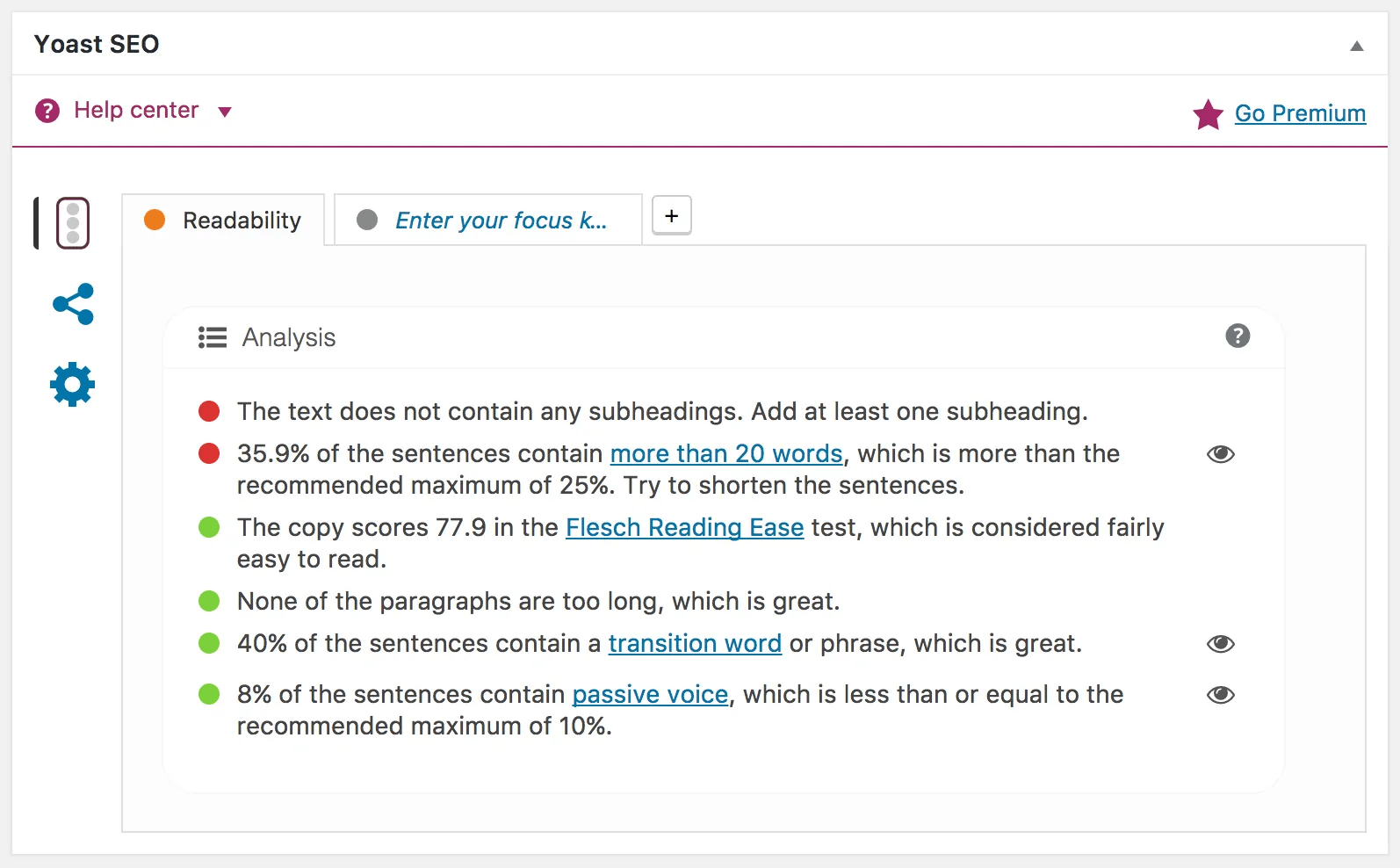
Using A Readability Score To Rank Higher In Organic Search

Get helpful updates in your inbox
Using A Readability Score To Rank Higher
Your ability to rank highly in the results for a given search is a function of a lot of different factors, as you already know. Site traffic, inbound links, social network shares, age of your domain, quality of your HTML code all play a factor. But did you know that the complexity of your prose is a factor too and that this can be measured by a readability score?

While Google recently dropped reading level as a search filter, suggesting that it might not be something that people use to look for content, that doesn’t mean it’s still not a factor in how content ranks in search results. Readability determines if people will actually spend time on your site, visit other pages, or bounce; which are certainly ranking factors.
So, how do you make stuff readable, what is a readability score, and how do you optimize for it?
The math behind a readability score
Turns out that the most common method for calculating the reading level of prose is the Flesch-Kincaid formula, which makes two simple assumptions about what makes something easy or hard to read:
- shorter words are easier to understand.
- shorter sentences are easier to understand.

There’s a complicated mathematical formula that’s built around total words divided by the total number of sentences and total syllables divided by the total number of words.
The concept can be easily illustrated as a sentence like:
The cat jumped over the box.
This is is clearly more readable (e.g. easier to understand and more accessible for younger readers) than a sentence like this one from Science Daily:
A quantum dot is a semiconductor nanostructure that confines the motion of conduction band electrons, valence band holes, or excitons (bound pairs of conduction band electrons and valence band holes) in all three spatial directions.
Frankly, I have no idea what this second sentence even means, but if we look at the two mathematically, the first is six words and seven syllables, while the second is 35 words and, um, a whole lotta syllables.
Comparing and calculating readability scores
If you’re a WordPress user, you’ve likely already bumped into readability scores because Yoast SEO includes the Flesch-Kincaid test as one of its assessments of your writing. You might never have clicked on the “readability” tab but it offers some interesting data. Here’s an example from one of my own recent blog posts:

The criteria turn out to be more than just the Flesch-Kincaid Readability Score, but you can see in the middle of the list my post scores 77.9, which makes it at 8th or 9th grade reading level, according to the standard chart.
A score of 90-100 is 5th grade, 50-60 is high school and anything below 50 is college level or higher. A score of zero would mean you have tons of syllables, tons of long words and one insanely long sentence. Not so good!
For comparison purposes, Reader’s Digest scores a 65, Time magazine is a 52, the book Moby Dick is a 57 and Harvard Law Review scores in the mid-30’s. How’s your writing stack up?
How to make your content more readable
While it may be obvious, let’s just state it: you can make your writing more accessible by having shorter words and shorter sentences. I know this is a challenge for my own writing because I tend towards long, complex sentences which can make it more difficult to read my articles.
Look at your writing. Do you use lots of commas to separate out phrases? Do you like to show off your vocabulary when you could use shorter and simpler words to make the same point? Loquaciousness and a tendency towards polysyllabic phraseology could unquestionably be adversely impacting your algorithmic ranking!

While we’re taking about readability, did you know that grammar and spelling matter too? Fortunately, you can improve both with ease by installing plugins to your WordPress backend. Or do something even savvier, by writing your prose in Microsoft Word or Apple Pages: both have excellent built-in spelling dictionaries and grammar analysis tools. Grammarly is also a nice Chrome Extension that can improve your ability to catch errors.
Writing for your readers
As with everything SEO, it’s important to know the criteria and be able to adjust what you do to maximize your chance of being found by people searching for your content, service, or information. But don’t forget that meeting the needs of your human readers is tantamount too: forget them in your zeal to SEO-ize and you’ll win the proverbial battle but lose the war.
Or, um, win the battle. But lose the war. In short, staccato sentences. Like these.
Note: This article has a calculated Flesch-Kincaid readability score of 62.8.

Tyler is an award-winning digital marketer, founder of Pubtelligence, CMO of Ezoic, SEO speaker, successful start-up founder, and well-known publishing industry personality.
Featured Content
Checkout this popular and trending content

Ranking In Universal Search Results: Video Is The Secret
See how Flickify can become the ultimate SEO hack for sites missing out on rankings because of a lack of video.
Announcement

Ezoic Edge: The Fastest Way To Load Pages. Period.
Ezoic announces an industry-first edge content delivery network for websites and creators; bringing the fastest pages on the web to Ezoic publishers.
Launch

Ezoic Unveils New Enterprise Program: Empowering Creators to Scale and Succeed
Ezoic recently announced a higher level designed for publishers that have reached that ultimate stage of growth. See what it means for Ezoic users.
Announcement
